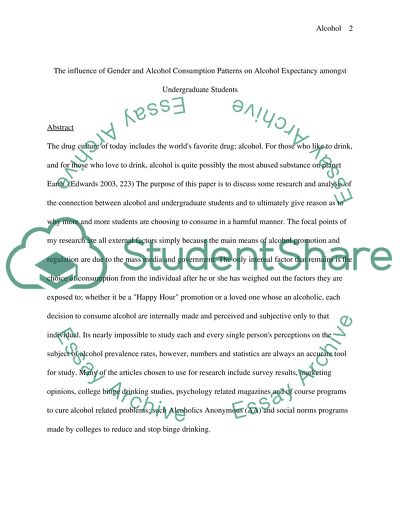Cite this document
(“The influence of Gender and Alcohol Consumption Patterns on Alcohol Essay”, n.d.)
The influence of Gender and Alcohol Consumption Patterns on Alcohol Essay. Retrieved from https://studentshare.org/miscellaneous/1520886-the-influence-of-gender-and-alcohol-consumption-patterns-on-alcohol-expectancy-amongst-undergraduate-students
The influence of Gender and Alcohol Consumption Patterns on Alcohol Essay. Retrieved from https://studentshare.org/miscellaneous/1520886-the-influence-of-gender-and-alcohol-consumption-patterns-on-alcohol-expectancy-amongst-undergraduate-students
(The Influence of Gender and Alcohol Consumption Patterns on Alcohol Essay)
The Influence of Gender and Alcohol Consumption Patterns on Alcohol Essay. https://studentshare.org/miscellaneous/1520886-the-influence-of-gender-and-alcohol-consumption-patterns-on-alcohol-expectancy-amongst-undergraduate-students.
The Influence of Gender and Alcohol Consumption Patterns on Alcohol Essay. https://studentshare.org/miscellaneous/1520886-the-influence-of-gender-and-alcohol-consumption-patterns-on-alcohol-expectancy-amongst-undergraduate-students.
“The Influence of Gender and Alcohol Consumption Patterns on Alcohol Essay”, n.d. https://studentshare.org/miscellaneous/1520886-the-influence-of-gender-and-alcohol-consumption-patterns-on-alcohol-expectancy-amongst-undergraduate-students.


